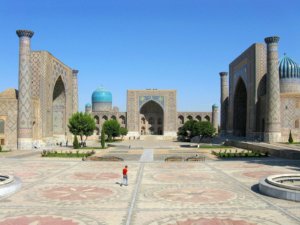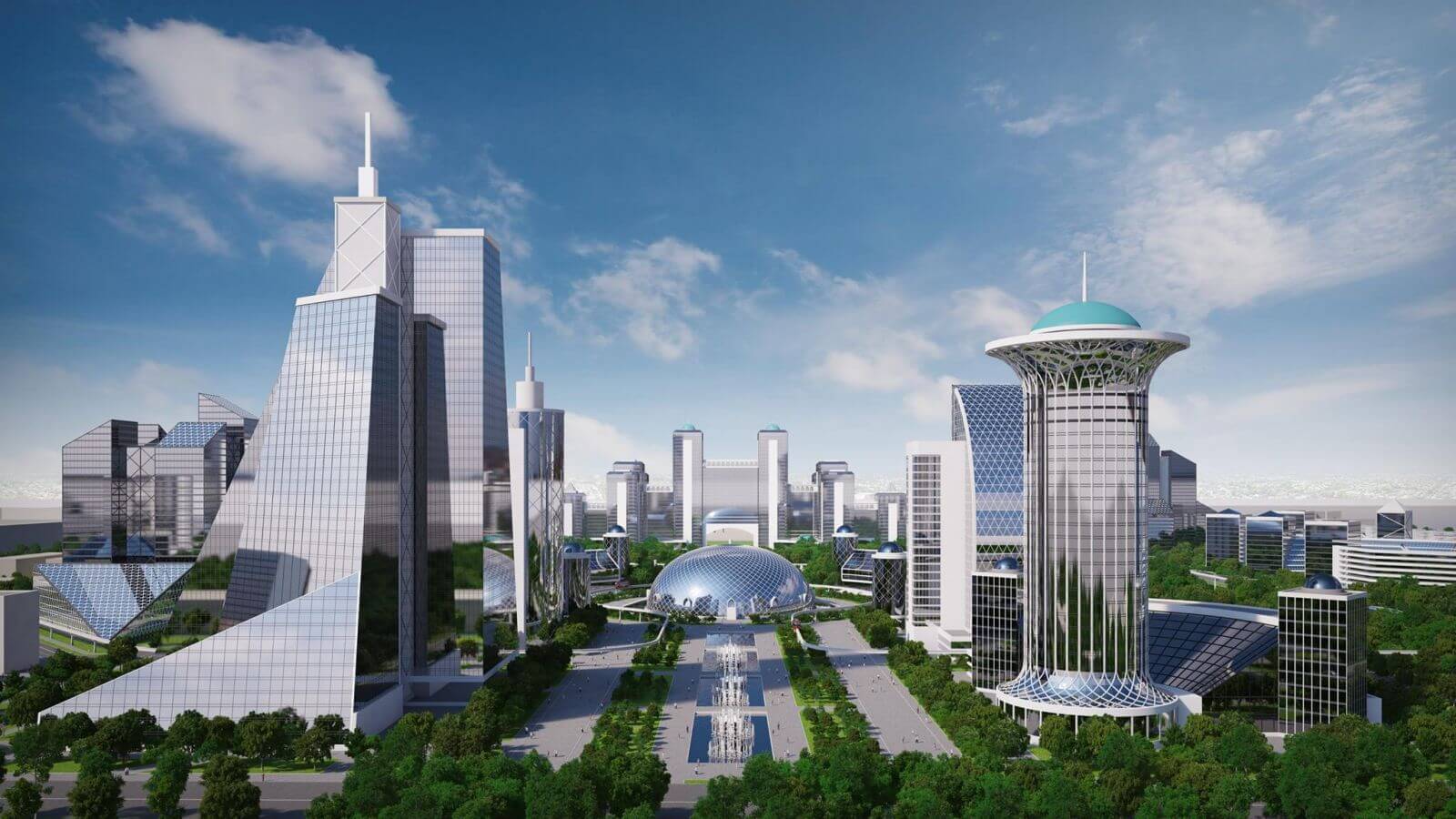Photo: Tashkent City designs.
Tashkent, the capital of Uzbekistan, is undergoing a transformation at a pace and scale almost comparable to Samarkand in 1370, when the Turco-Mongol ruler Timur, or, Tamerlane, as he is known in the West, made it his capital.
On the one hand, Tamerlane was a brutal conqueror who razed ancient cities to the ground and put entire populations to the sword. The empire he founded in 1370 and ruled until his death in 1405 (probably of a mid-winter cold, caught while on his way to change the Ming regime in China) stretched from Russia to India and from the Mediterranean Sea to Mongolia.
But on the other hand, Tamerlane was a brilliant constructor. One of his signature achievements was Samarkand, which he strove to make the most splendid city in Asia.
“It’s not hard to see why the author of the ‘1001 Nights’ had Scheherazade spin her tales from a palace in Samarkand: the city was on the Silk Road, alive with people from different lands; it was a wonderland of Islamic architecture, and a great center of learning,” Srinath Perur wrote in the Guardian newspaper.

The Registan in Samarkand
But no place in Samarkand represents all three aspects as well as the Registan, the main square, three sides of which stand a blur-of-blue-tiled madrasas (Islamic colleges). In 1888 George Curzon, world traveler and future viceroy of India, called it “the noblest public square in the world.”
While most of the edifices seen around the square were built after Tamerlane’s death, they couldn’t have been built without his sacking Islamic brother cities (including Baghdad, Damascus and Khiva) and his sparing their artisans and craftsmen, who he brought back to Samarkand.
In 1399, just a year after reducing Delhi to rubble because he thought the Muslim sultan was too tolerant of his Hindu subjects, Tamerlane was back to building his sumptuous capital. A caravan of 90 captured elephants was employed to carry stones from quarries to erect a great mosque, according to Ruy Gonzalez de Clavijo, an envoy the Spanish kingdom of Castile dispatched to Samarkand. The Europeans rather liked Tamerlane because roughed up their neighborhood bully, the Ottoman Turks.
Tamerlane returned from his military conquests — estimated to have wiped out five percent of the world’s population — with architectural inspiration and plunder that could finance his appetite for building in Samarkand and other cities.
One of his monuments bears the proverb, “If you want to know about us, examine our cities.”
That proverb could be driving Shavkat Mirziyoyev, who succeeded Islam Karimov as president in 2016. His smart city projects in Tashkent, Samarkand and Bukhara, so it seems, are aimed at rebranding Uzbekistan as a country interested in political reform, economic investment and good relations with the rest of the world.
Javlon Vakhabov, Uzbekistan’s youthful new ambassador in Washington, discussed one smart city project, Tashkent City, in some depth at a summit on smart cities and communities organized by Dentons, the world’s largest law firm.
Construction of Tashkent City, a $1.7-billion international business and financial hub in the heart of the capital, started in 2018. The design includes an industrial park, eight business centers, a shopping mall, restaurants and a cultural center, as well as residential apartments on a 173-acre site.
“The aim of this project,” according to the government, “is to create an architectural complex in the center of Tashkent, implemented by embedding the latest trends in world architecture and the application of environmentally-friendly and energy-saving, smart technologies.”
Vakhabov enthused that Tashkent City projects have already received millions of dollars in loans from the Asian Development Bank, the European Bank for Reconstruction and Development, and the World Bank.
But he added, “Uzbekistan is a 3,000-year-old country. We have four UNESCO World Heritage cities. We have 4,000 sites that are highly protected by UNESCO. We need to be sensitive to these historical sites and adapt them to smart cities.”
“A mass movement of people from the countryside to the cities has created stresses on the environment and infrastructure,” he said. Ultimately smart cities can alleviate those stresses, using information and communication technology to improve efficiency, sustainability and citizen welfare.
Meantime, smart city projects have been stressing out people. There have been news reports about protests and court cases in Tashkent over traditional housing demolitions and evictions.
“As for the resettlement of people living in houses built by their forefathers, we need to create more favorable conditions for people persuaded to move to other communities,” Vakhabov said reassuringly.
Linda Gasparello is producer and co-host of “White House Chronicle” on PBS. Her email is whchronicle@gmail.com.

 Follow
Follow
Leave a Reply